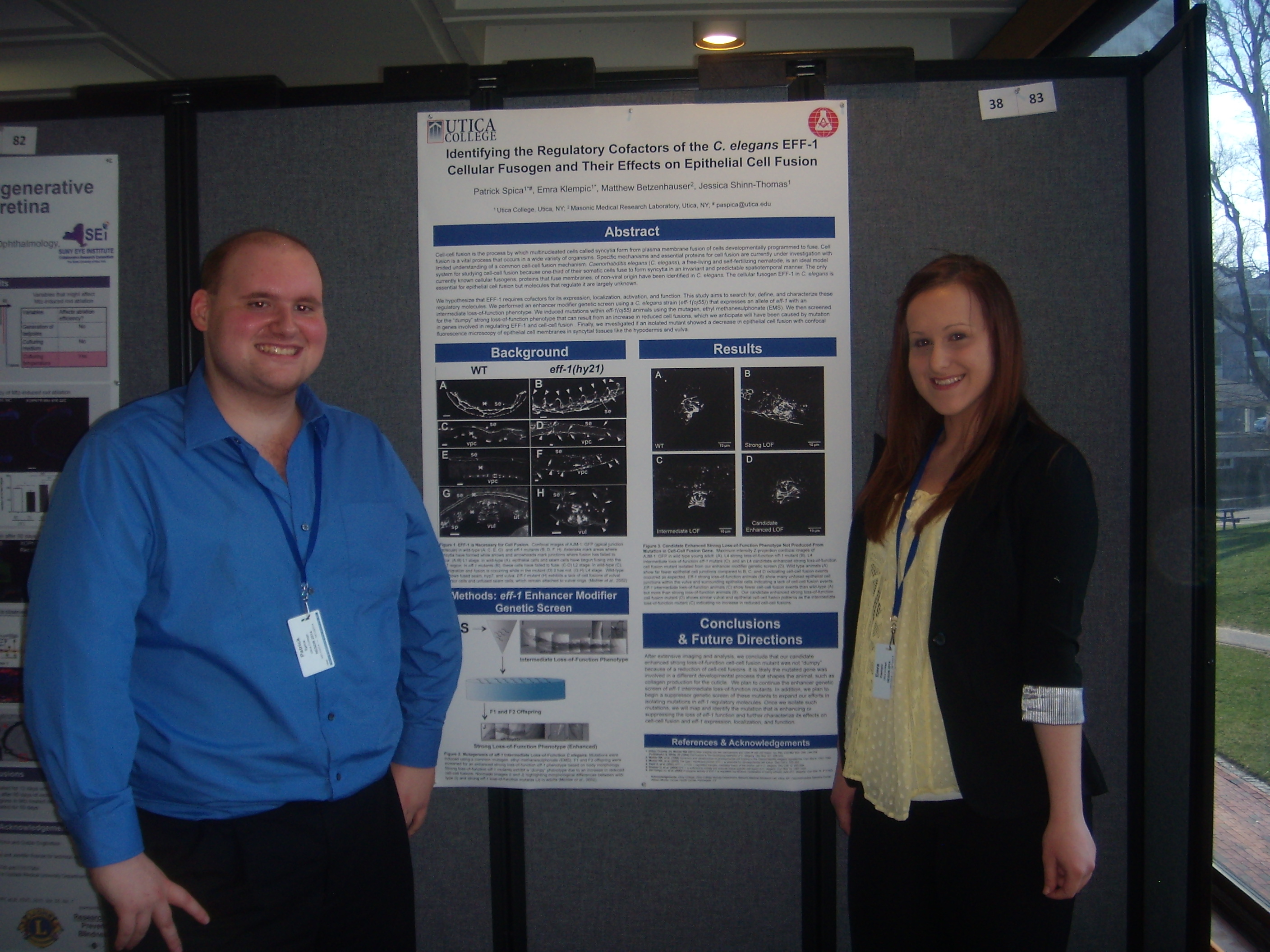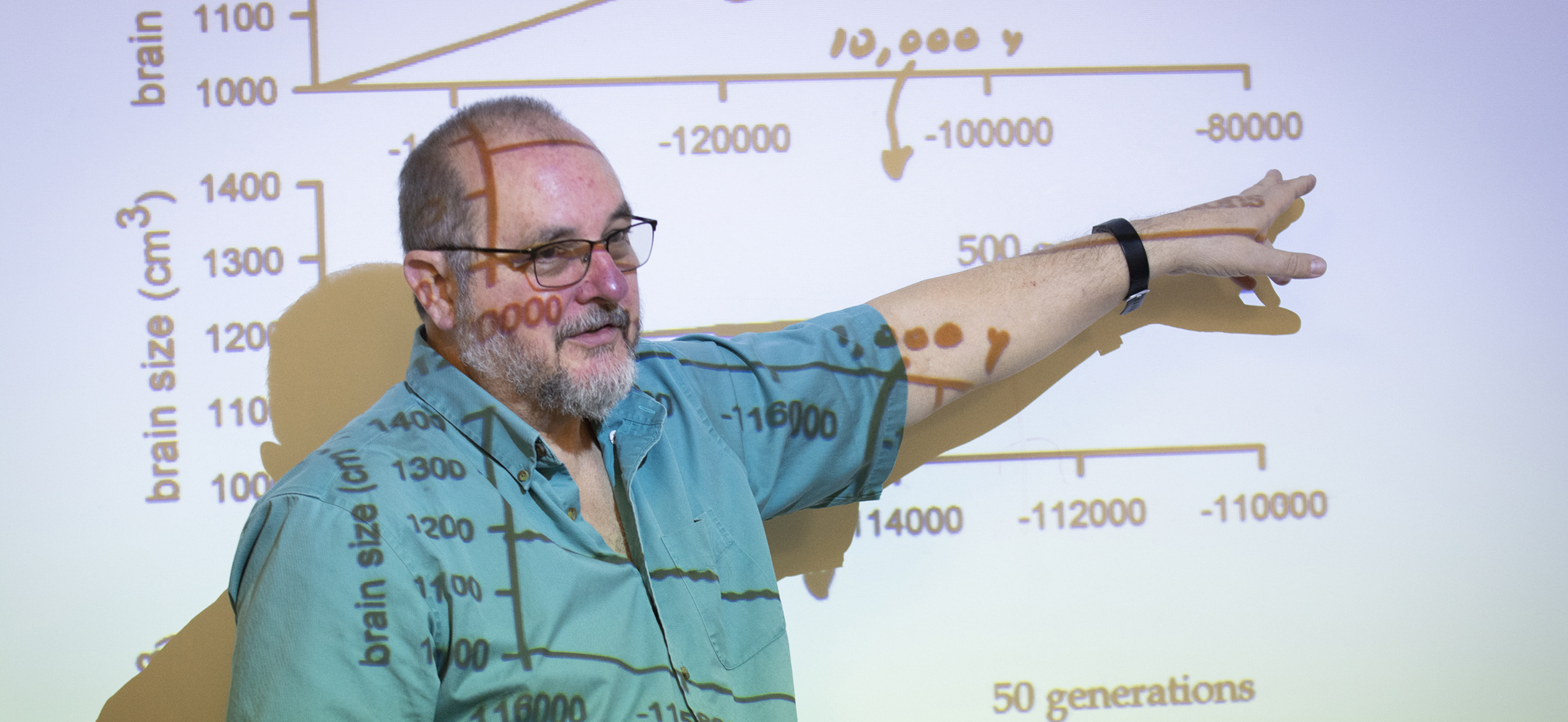
Spica, Patrick,* Emra Klempic,* Mathew Bettzenhauser, and Jessica Shinn-Thomas. 2014. Identifying the regulatory cofactors of the C. elegans EFF-1 cellular fusogen and their effects on epithelial cell fusion. Northeast Regional Meeting of the Society for Developmental Biology, Woods Hole, MA.
Abstract: Cell-cell fusion is the process by which multinucleated cells called syncytia form from plasma membrane fusion of cells developmentally programmed to fuse. Cell fusion is a vital process that occurs in a wide variety of organisms. Specific mechanisms and essential proteins for cell fusion are currently under investigation with limited understanding of a common cell-cell fusion mechanism. Caenorhabditis elegans (C. elegans), a free-living and self-fertilizing nematode, is an ideal model system for studying cell-cell fusion because one-third of their somatic cells fuse to form syncytia in an invariant and predictable spatiotemporal manner. The only currently known cellular fusogens, proteins that fuse membranes, of non-viral origin have been identified in C. elegans. The cellular fusogen EFF-1 in C. elegans is essential for epithelial cell fusion but molecules that regulate it are largely unknown.
We hypothesize that EFF-1 requires cofactors for its expression, localization, activation, and function. This study aims to search for, define, and characterize these regulatory molecules. We performed an enhancer modifier genetic screen using a C. elegans strain (eff-1(oj55)) that expresses an allele of eff-1 with an intermediate loss-of-function phenotype. We induced mutations within eff-1(oj55) animals using the mutagen, ethyl methanesulphonate (EMS). We then screened for the “dumpy” strong loss-of-function phenotype that can result from an increase in reduced cell fusions, which we anticipate will have been caused by mutation in genes involved in regulating EFF-1 and cell-cell fusion . Finally, we investigated if an isolated mutant showed a decrease in epithelial cell fusion with confocal fluorescence microscopy of epithelial cell membranes in syncytial tissues like the hypodermis and vulva.

